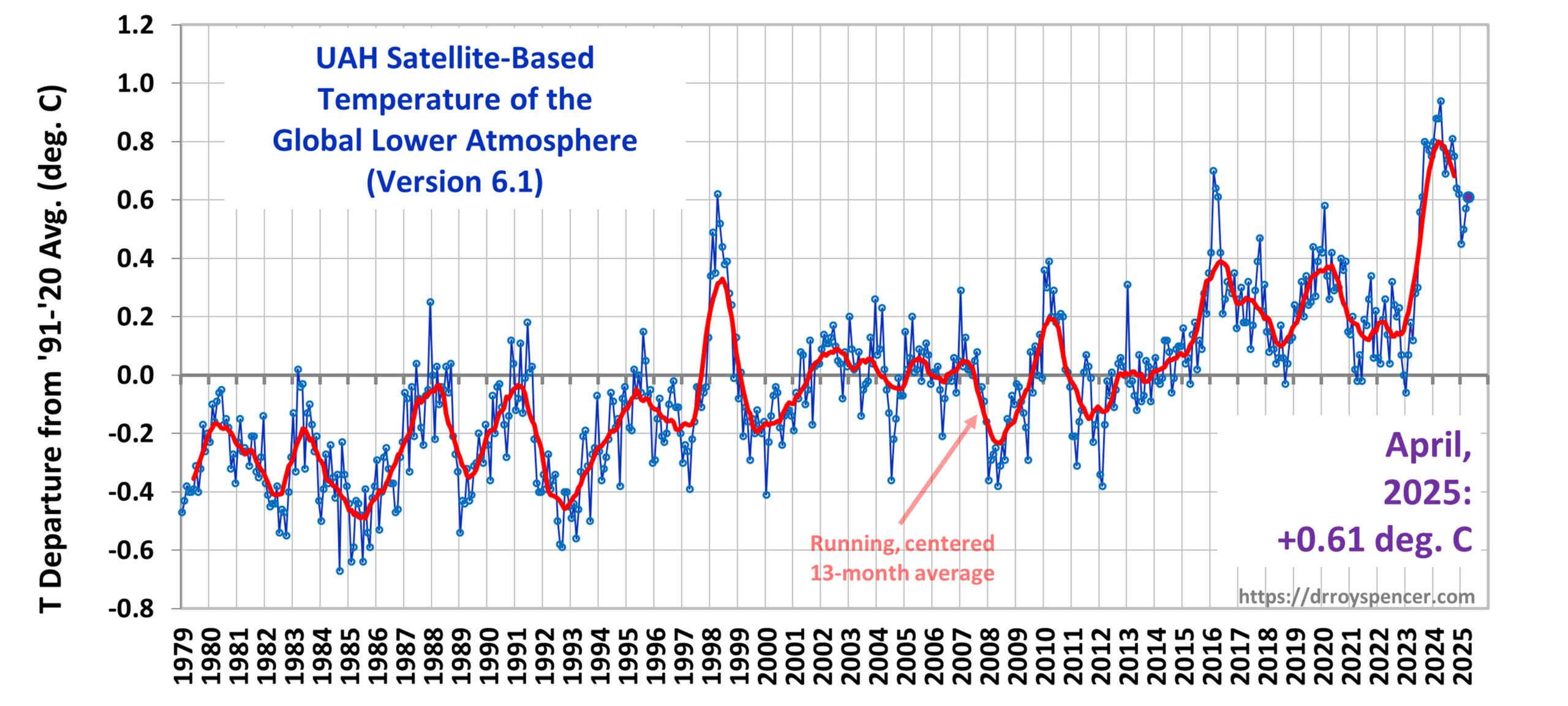
It took the better part of two years to satisfy the reviewers, but finally our paper Urban Heat Island Effects in U.S. Summer Surface Temperature Data, 1895–2023 has been published in the AMS Journal of Applied Meteorology and Climatology.
To quickly summarize, we used the average temperature differences between nearby GHCN stations and related those to population density (PD) differences between stations. Why population density? Well, PD datasets are global, and one of the PD datasets goes back to the early 1800s, so we can compute how the UHI effect has changed over time. The effect of PD on UHI temperature is strongly nonlinear, so we had to account for that, too. (The strongest rate of warming occurs when population just starts to increase beyond wilderness conditions, and it mostly stabilizes at very high population densities; This has been known since Oke’s original 1973 study).
We then created a dataset of UHI warming versus time at the gridpoint level by calibrating population density increases in terms of temperature increase.
The bottom line was that 65% of the U.S. linear warming trend between 1895 and 2023 was due to increasing population density at the suburban and urban stations; 8% of the warming was due to urbanization at rural stations. Most of that UHI effect warming occurred before 1970.
But this does not necessarily translate into NOAA’s official temperature record being corrupted at these levels. Read on…
What Does This Mean for Urbanization Effects in the Official U.S. Temperature Record?
That’s a good question, and I don’t have a good answer.
One of the reviewers, who seemed to know a lot about the homogenization technique used by NOAA, said the homogenized data could not be used for our study because the UHI-trends are mostly removed from those data. (Homogenization looks at year-to-year [time domain] temperature changes at neighboring stations, not the spatial temperature differences [space domain] like we do). So, we were forced to use the raw (not homogenized) U.S. summertime GHCN daily average ([Tmax+Tmin]/2) data for the study. One of the surprising things that reviewer claimed was that homogenization warms the past at currently urbanized stations to make their less-urbanized early history just as warm as today.
So, I emphasize: In our study, it was the raw (unadjusted) data which had a substantial UHI warming influence. This isn’t surprising.
But that reviewer of the paper said most of the spurious UHI warming effect has been removed by the homogenization process, which constitutes the official temperature record as reported by NOAA. I am not convinced of this, and at least one recent paper claims that homogenization does not actually correct the urban trends to look like rural trends, but instead it does “urban blending” of the data. As a result, which trends are “preferred” by that statistical procedure are based upon a sort of “statistical voting” process (my terminology here, which might not be accurate).
So, it remains to be seen just how much spurious UHI effect there is in the official, homogenized land-based temperature trends. The jury is still out on that.
Of course, if sufficient rural stations can be found to do land-based temperature monitoring, I still like Anthony Watts’ approach of simply not using suburban and urban sites for long-term trends. Nevertheless, most people live in urbanized areas, so it’s still important to quantify just how much of those “record hot” temperatures we hear about in cities are simply due to urbanization effects. I think our approach gets us a step closer to answering that question.
Is Population Density the Best Way to Do This?
We used PD data because there are now global datasets, and at least one of them extends centuries into the past. But, since we use population density in our study, we cannot account for additional UHI effects due to increased prosperity even when population has stabilized.
For example, even if population density no longer increases over time in some urban areas, there have likely been increases in air conditioning use, with more stores and more parking lots, as wealth has increased since, say, the 1970s. We have started using a Landsat-based dataset of “impervious surfaces” to try to get at part of this issue, but those data only go back to the mid-1970s. But it will be a start.

 Home/Blog
Home/Blog





